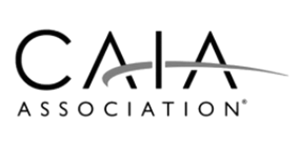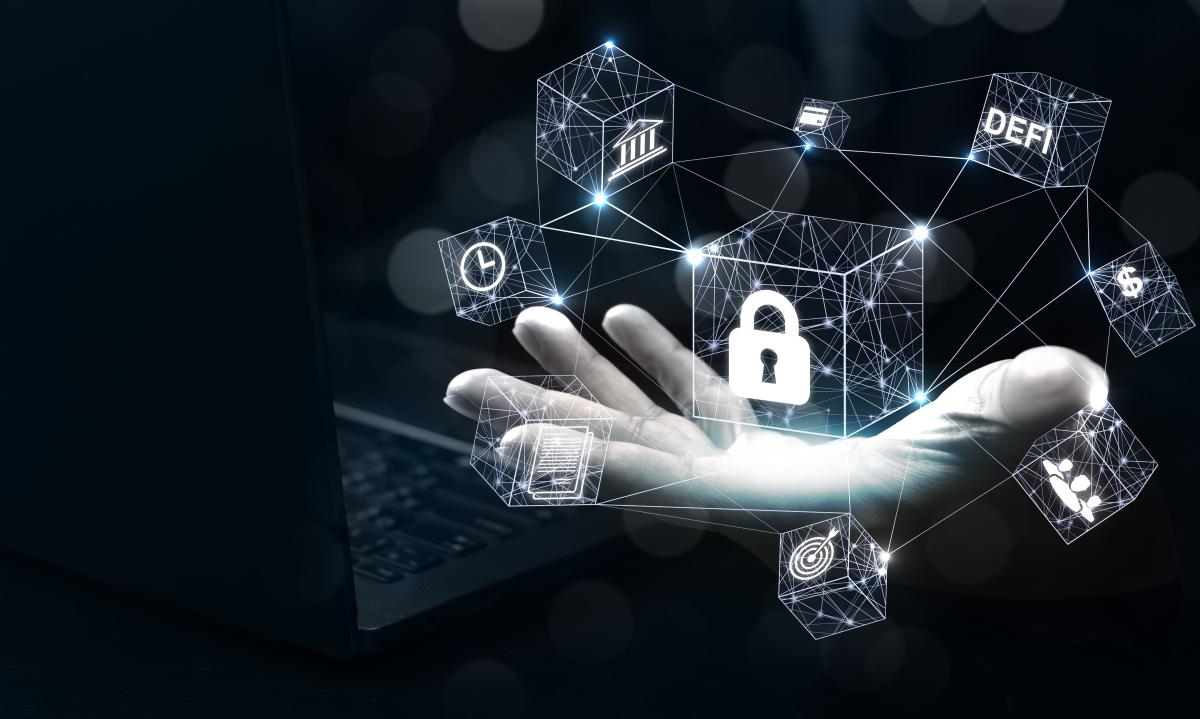By Tommaso Cervellati, CAIA, Blockchain Specialist, State Street Bank
Introduction
In the last few years, the convergence of TradFi and DeFi is rapidly unfolding, driven by a growing interest and developments spanning the two, such as the launch of spot ETFs on bitcoin by BlackRock and other major TradFi players, and the tokenization of real-world assets (RWAs). The latter is probably one of the more interesting developments for TradFi brought by blockchain technology, because of its potentially disruptive impact on private assets by creating new paradigms for all the stakeholders involved in the investment process.
RWAs are assets (physical or financial) that derive their value from sources outside the blockchain. Tokenization of RWAs is the process of converting these assets into digital tokens on a blockchain. For example, an issuer can tokenize a bond by using tokens on a blockchain to represent the bondholders’ rights associated with this financial instrument. In a similar manner, the ownership of real estate could also be represented by multiple tokens owned by different parties. In both cases, the tokens provide the issuer the possibility of fractionalizing the ownership of an asset into multiple tokens, and allows the holders the possibility to trade the tokens directly without the need for an intermediary.
What else can be tokenized?
The convergence between fintech and financial institutions, as well as macroeconomic factors (e.g. the increase in interest rates), put pressure on both fees and expected returns. In this context, product innovation can help create a competitive advantage for asset managers. Blockchain could be one of the main drivers of this convergence, and tokenization could play a crucial role in creating this advantage.
Tokenization can offer great potential to increase liquidity by providing a more efficient secondary market where investors may even be able to exchange tokenized assets 24/7 peer-to-peer. Furthermore, fractional ownership can facilitate investments by lowering entry barriers in certain markets, such as private equity and private debt, as well as in real estate, infrastructure, and even art pieces and fine wines. Besides possible gains in efficiency and market access, tokenization can also foster transparency by sharing data on transactions and ownership over a blockchain network.
Beyond these advantages offered by blockchain technology, the use of smart contracts (i.e. programmable actions that can automate processes and save time) is also an interesting feature offered by tokenization. In fact, RWA tokens, like other cryptographic tokens, possess programmable capabilities, enabling the inclusion of features such as lockup periods, waterfall distributions, and different types of covenants typically found in private markets.
Tokenized cash and treasuries are currently the primary forms of RWAs, but the tokenization of alternative investments has also started to emerge. Overall, the outlook for tokenized RWAs is gaining traction, and according to a report issued by Boston Consulting Group published in September 2023, the on-chain RWA market is projected to reach up to USD 16 trillion by 2030[1].
Tokenization can transform how private assets are issued and traded, and it has already been proven successful in several projects worldwide. The lessons learned can be applied to different types of private assets to enhance their tradability and decrease the associated costs.
Benefits of tokenization of private assets
Tokenizing private assets brings numerous benefits, enhancing efficiency for both investors and asset managers, and is poised to become a major trend in private markets. Citi Group recently highlighted this potential, suggesting that tokenization in private markets could grow 80-fold, reaching nearly USD 4 trillion by 2030[2]. The primary advantages include:
Faster and cheaper transactions: Modern blockchains enable fast, low-cost transactions, which significantly benefit asset tokenization. This could expedite its adoption as the main method for managing private assets, with transaction updates occurring within minutes or even seconds, compared to the days required by traditional legacy systems. For example, blockchains using the proof-of-stake consensus mechanism ensure high throughput and low fees while providing instant settlement finality.
Increased liquidity: Private assets are typically illiquid, affecting secondary market trading and increasing the liquidity premium demanded by investors. Tokenization addresses liquidity limitations, offering investors the possibility of trading tokens on a blockchain network 24/7. On the issuer’s side, converting private assets into blockchain tokens can increase liquidity through cheaper and more secure transactions.
Fractional ownership: A significant feature of tokenization is the ability to own small fractions of an asset. This lowers the entry barriers for investments, which have historically had high minimums. For instance, an investor wishing to gain exposure to different real estate markets but lacking sufficient funds to build a diversified portfolio can invest in multiple tokens representing parts of properties.
Data transparency: Blockchain technology is popular beyond the financial industry due to its decentralized, immutable, and transparent nature. Once a block is added to the chain, it cannot be altered or tampered with, thanks to the irreversibility of cryptographic hashing. This transparency enhances market efficiency, attracting more investors and reducing costs related to information asymmetries.
Operational efficiency: Transparent data and automation on a unified ledger create operational efficiencies for middle- and back-office activities. Smart contracts can also automate tasks such as compliance, whitelisting, escrow account management, and corporate actions, streamlining processes and reducing costs.
These benefits can not only facilitate access to private assets but also help asset managers create a competitive advantage and expand their investor base.
Democratization
Studies consistently show that alternative investments can reduce risk and enhance returns, contributing significantly to long-term portfolio success[3] and enhancing overall performance through diversification. The increasing appetite for alternatives among both institutional and individual investors has fueled steady growth over the past 20 years. Allocations to alternative investments have surged from USD 4.8 trillion to USD 22 trillion[4], constituting 15% of global assets under management, despite their higher fees, illiquidity, and lack of transparency compared to traditional portfolios.
Smaller investors are increasingly interested in private equity, private debt, and real estate but often face entry barriers, such as substantial minimum investment requirements. Recent financial and technological innovations have expanded individual investors' access to these asset classes, and tokenization can offer further opportunities to democratize access.
With an estimated USD 100 trillion[5] in individual investors' assets, investment managers are keen to tap into this capital pool, while policymakers see an opportunity to fund critical infrastructure projects for the energy transition. The European Long-Term Investment Fund (ELTIF) [6], a pan-European regime for alternative investment funds (AIFs), exemplifies efforts to channel capital into priority areas, supporting the EU's goals of smart, sustainable, and inclusive growth. Unlike other AIF forms, ELTIFs can also be offered to retail investors, marking a milestone in cross-border European long-term fund development.
In this context, tokenization presents a significant opportunity for asset managers, investors and the public sector as a technological complement to the ELTIF regime to promote long-term, impactful investments. Tokenization enhances transparency and liquidity in the investment process, allowing funds to meet their objectives with more flexible, liquid investment vehicles. Moreover, a liquid secondary market for tokenized alternative investment funds on a blockchain network can enable investors to buy and sell tokens efficiently and cost-effectively, without impacting the liquidity of the fund.
Challenges
While tokenization offers advantages such as increased liquidity, transparency, and access to alternative investments, it also presents several risks and constraints:
Technological Risks: Tokenization relies on blockchain technology, which is susceptible to network security issues, technical glitches, and hacking. The reliability of tokenized assets depends on the robustness of the underlying technology, and any technical failure can disrupt operations and undermine confidence.
Regulatory and Legal Uncertainty: The evolving regulatory landscape for tokenized assets presents compliance challenges and legal ambiguities. Different jurisdictions have varying rules, and changes or differing interpretations can create an unstable legal environment for tokenized assets.
Market Confidence and Liquidity: The success of tokenized assets depends on market confidence in the issuing platform or sponsor. Lack of trust can lead to wide bid-offer spreads and tokens trading below net asset value. Actual liquidity depends on a robust secondary market, which may not always be present.
Operational Inefficiencies and Costs: Although tokenization promises efficiency gains, the initial setup and integration can be complex and costly. Ensuring seamless execution of token issuance and management requires significant technological and administrative efforts, potentially offsetting anticipated benefits.
Asset-Specific Constraints:
Private Equity and Venture Capital: Tokenization does not simplify the due diligence process, which remains resource-intensive. Token liquidity depends on market demand, and long-term illiquidity of these investments can still pose constraints.
Private Debt: Complex covenant structures may not be fully manageable through tokenization, and increased liquidity could reduce the liquidity premium, potentially lowering returns.
Real Estate: Effective diversification requires a large universe of real estate tokens, and market confidence in the issuing platform is crucial.
Data Security and Transparency: While blockchain enhances transparency, ongoing risks include data breaches and cybersecurity threats. Protecting sensitive financial data in a decentralized environment is challenging, and any breach can compromise the integrity of tokenized assets.
High Market Volatility: Allowing individual investors greater access to illiquid alternatives raises specific concerns. Tokenization can introduce constant volatility, which non-professional investors may struggle to manage. Unlike venture capital funds, which are generally valued on quarterly basis, a tokenized venture capital fund could be priced at any moment, leading to higher volatility.
Addressing these challenges requires coordinated efforts from regulators, technology providers, asset managers, and investors to ensure successful and sustainable integration of tokenization into the financial ecosystem. A comprehensive value chain to handle tokenized alternative investments is crucial, providing a professional environment to support investors and guide their decisions. Ensuring all stakeholders understand the risks associated with tokenized assets is vital, especially as tokenization aims to democratize access to alternative investments. Comprehensive education is essential to ensure stakeholders are capable of managing these assets.
Conclusion
Tokenization of RWAs is one of the most promising applications of blockchain technology, offering the potential to democratize access to high-value assets by enhancing liquidity, transparency, and efficiency. Transitioning to a tokenized economy has the potential to reshape private markets, offering potential benefits to issuers and investors alike. Leveraging tokenization can unlock growth and efficiency, fostering a more inclusive and impactful investment ecosystem. At the same time, tokenization remains limited and exploratory. Overcoming regulatory, technological, and adoption challenges will require collaboration among regulators, financial institutions, technology providers, and investors to create new business models and drive innovation. Support from financial intermediaries and a continued emphasis on education will be essential to ensure that investors, both institutional and individual, can navigate this new landscape and make informed investment decisions.
This article is a summary of the piece featured in the EFPA Digitalisation Handbook, which can be accessed at the following link: https://www.efpa-handbook.com/digitalization-handbook
About the Contributor
Tommaso Cervellati has been with State Street in Luxembourg for over a decade, specializing in investment structuring within the Alternative Investment department. In his role as a Blockchain Specialist, he actively contributes to several national working groups on blockchain and digital assets. Beyond his role at State Street, Tommaso co-founded Olympus Initiative, a private investment firm dedicated to digital assets, where he serves as a board member overseeing portfolio management and corporate governance. He has been a member of the CAIA Association since 2017 and became Executive for Luxembourg Chapter in 2023. Tommaso holds a Master of Science in Finance from Università di Bologna and an Executive Master in Business Administration from HEC Paris.
Learn more about CAIA Association and how to become part of a professional network that is shaping the future of investing, by visiting https://caia.org/
Bibliography
"Crossing the Threshold: World Building In a New Saga", Aaron Filbeck, 2024
"From ripples to waves: The transformational power of tokenizing assets", Anutosh Banerjee, Julian Sevillano, and Matt Higginson, with Donat Rigo, and Garry Spanz, 2024
"Increasing Smaller Investor Access to Illiquid Alternative Investments: Approaches, Developments & the Expanding Role of Technology", David Donahue, Nina Tannenbaum, and Elsie Russell Brown, 2022
"Investment Fund Tokenization for Mass Adoption or Better Distribution?", Paolo Brignardello, 2023
"January 2024: The Next $20 Trillion in Alternative Investments", Aaron Filbeck, 2024
"McKinsey Global Private Markets Review 2024: Private markets in a slower era", Fredrik Dahlqvist, Alastair Green, Paul Maia, Alexandra Nee, David Quigley, Aditya Sanghvi, Connor Mangan, John Spivey, Rahel Schneider, and Brian Vickery, 2024
"Money, Tokens, and Games", Citi Global Perspectives & Solutions, 2023
“Real-World Assets: Bringing Real-World Value to DeFi”, Crypto.com Research, 2023
"Relevance of on-chain asset tokenization in ‘crypto winter", Sumit Kumar, Rajaram Suresh, Darius Liu, Bernhard Kronfellner and Aaditya Kaul, 2023
“Tokenisation of RWAs & Yield-Bearing Stablecoins”, Crypto.com Research, 2024
"Tokenization of Alternative Investments", Adrian Lai, Philipe Pang, and Emma Lee, 2021
"With Tokenization, the Time has come for Evergreen Funds", Richard Johnson, and Ciarán Hynes, 2022




